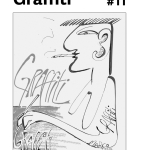by Rene Tihista
These days there’s a lot of conflict, hand wringing, puzzlement and outrage about the various sexual identity issues currently riling up our dyspeptic society. One of these disputes concerning what has become known as LBGTQ issues, is usually confined to humans. However, though not widely known, issues of gender identity are not exclusive to H. Sapiens. Lodged in my vast experiential archive of life’s trivia, is the curious case of a male “buck” sheep, as rams were called in Montana where I grew up, who suffered not from gender confusion, but, and arguably worse, species confusion. A little background is necessary to preface this tragically enigmatic tale.
When my oldest brother Edward assumed responsibility for the family business after my father died, he’d been away from any working involvement with sheep for more than a decade. After serving in WWII, he’d been a salesman and in retail management, both occupations he excelled at. But the cultural imperative of the eldest son taking over the family business after the death of the paterfamilias was compelling and he returned home to fulfill his patrilineal destiny. His absence from experience in the sheep business occasionally clouded his judgment as illustrated in the case of the aforementioned confused buck.
To breed our herd of 1,800 ewes we had three-hundred rams. That’s a pretty standard ratio of six ewes per buck although obviously there were occasional anomalies to consider: bucks that were older, timid or only mildly interested in performing their husbandry duties. Or ewes who were skittish, cantankerous, aging or indifferent to breeding despite being in estrus.
A neighboring farmer, who also had a small herd of cattle, had acquired and reared a Columbia Ram with his cattle. It was a beautiful animal. Quite large, as Columbia sheep are. They are a hybridized breed first developed in Wyoming prior to WWI and bred to thrive in the harsh climate typical in the western high plains of the Great Basin.
Open faced, they are good wool producers, their meat being a secondary asset. So, when the farmer talked Ed into buying the buck, just before breeding time in late October, it seemed like a propitious fit for our herd. Unfortunately, the big Columbian had a serious identity crisis. Much to Ed’s surprise and mounting frustrated anger, the big ram ignored the ewes while his more amorous peers went enthusiastically about their business. The Columbian was utterly disinterested in the ewes he was procured to implant his majestic genetic heritage into.
In early December, we trailed the sheep from the summer grazing range to our farm in the Milk River Valley for the winter. The drive took most of a day, about twenty-five miles and passed by several farms. Whenever we passed a herd of cows, the big Columbian took off at a dead run to be with the cattle. Ed, fuming and cussing, would drive over in the pickup, nab the recalcitrant Romeo with a sheep hook, and return him to the herd. This farce was repeated three times that I remember, the last being the very farm from which Ed had purchased the buck. He was gone quite a long while that time because, as we later learned, he had had a heated discussion with the farmer who’d sold him the malingering Columbian.
For all his shortcomings as a sheepman, Ed knew when to cut his losses. He sold the gender-confused sheep for a very reasonable price to a notorious former bootlegger and alleged calf rustler named Homer Dribble, who lived in the Badlands south of the Missouri River. I suspect the species-conflicted sheep became the main ingredient in at least a month’s worth of mutton stew.
By chance, many years later, an article in the Seattle Post Intelligencer caught my eye and shed an entirely different perspective on this unfortunate animal. A psychologist at the University of Washington was doing research on sheep and discovered that some of the rams in her study were apparently homosexual.
Another study by the University of Oregon corroborated this surprising finding. I quote: “Researchers in the Oregon Health and Sciences University School of Medicine, have confirmed that a male sheep’s preference for same sex partners has biological underpinnings. This study, along with others, strongly suggest that same sex preference is biologically determined in sheep and possibly in humans”*
After reading this I pondered how Ed might have responded to the news that his strapping Columbian buck could have been gay. But the ram displayed no apparent amorous proclivities toward his fellow rams. If he had, it might have explained the unexpected behavior. But there was his affinity for cows. Given the size differential between the big Columbian and potential cow mates, one has to be skeptical. Granted, he was huge—for a sheep, but still, to a bovine he might (to mix species metaphors) be considered a shrimp. I suppose an argument could be made for the odd case of species consanguinity. There is the precedent of Romulus and Remus though the veracity of that myth is questionable.
No, I suspect this particular sheep’s interest in cows was more than confused sexuality. Could it have been some spiritual connection? Humans make up spiritual fantasies all the time—communing with the spirts of the woods and rivers the birds and the flowers. Fly Fishermen harbor mystical feelings of solidarity with salmon and their impossible odyssey from a mountain stream to the depths of the Pacific and then, years later, back to their original remote spawning grounds. Are we to assume the so-called “lower” animals don’t possess the capacity for mysticism? How do we know that? Could this big Columbian have imagined he was a cow? Did he think, dream or contemplate life as a cow? I propose that the Columbian’s struggle with his species identity was a profound statement about life’s metaphysical mysteries. When I discover what those mysteries are, rest assured, I’ll report my findings.
*Science Daily, Oregon Health Sciences Center, March 9, 2004

